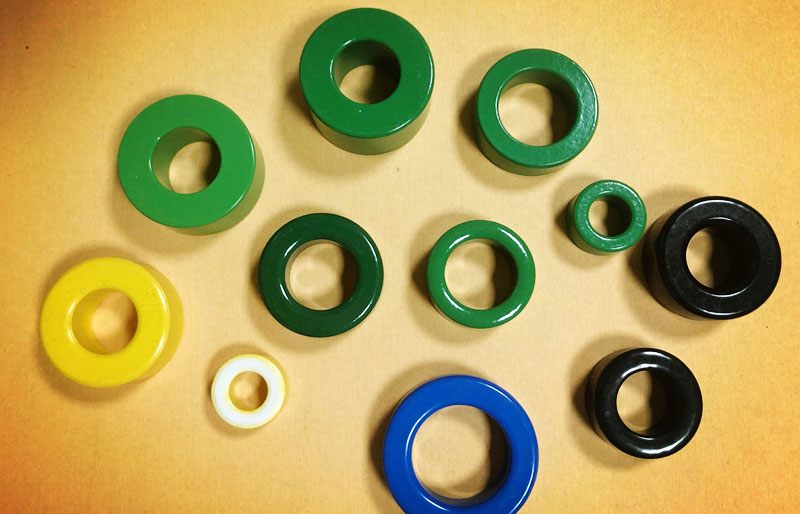Ferrite magnetic rings are further divided into manganese zinc ferrite magnetic rings and nickel zinc ferrite magnetic rings. The characteristics of the sintered materials vary depending on the materials used. The nickel zinc ferrite magnetic ring, as we know it, is mainly made of oxides or salts of iron, nickel, and zinc using electronic ceramic technology; Manganese zinc ferrite magnetic ring is made of oxides and salts of iron, manganese, and zinc, and is also manufactured using electronic ceramic technology. The two are basically the same in terms of materials and processes, with the only difference being that manganese and nickel are two different materials, and their usage effects on the same product are greatly different.
Manganese zinc materials have high magnetic permeability, while nickel zinc ferrite has low magnetic permeability. Manganese zinc ferrite can be used in applications with operating frequencies below 5MHz. Nickel zinc ferrite has a high resistivity and can be used in frequency ranges from 1MHz to hundreds of MHz. Except for common mode sensors, for applications below 70MHz, the impedance of manganese zinc material makes it the best choice; For applications ranging from 70MHz to hundreds of gigahertz, nickel zinc materials are recommended. Manganese zinc ferrite magnetic rings are generally used in the frequency range of kHz to MHz, and can be used to make magnetic cores, magnetic heads, and antenna rods for inductors, transformers, and filters; Nickel zinc ferrite magnetic rings can be used to make magnetic cores for mid cycle transformers, magnetic heads, shortwave antenna rods, tuned inductance reactors, and magnetic saturation amplifiers. Their application range and product maturity are much better than manganese zinc ferrite magnetic rings.
Here comes the key point, such as how to distinguish when two types of magnetic cores are mixed together? Here are two methods to introduce.
1. Visual inspection method: Due to the high magnetic permeability, large grain size, and compact structure of manganese zinc ferrite, it often appears black. However, nickel zinc ferrite generally has low magnetic permeability, fine and small grains, and is a porous structure, often appearing brown, especially when the sintering temperature is relatively low during the production process. Based on these characteristics, we can distinguish them visually. In areas with bright light, if the color of the ferrite is blackened and there are dazzling bright crystals, this magnetic core is manganese zinc ferrite; If you see a brown ferrite with a dull luster and inconspicuous grains, this magnetic core is nickel zinc ferrite. Visual inspection is a relatively rough method that can be mastered through certain practice.
2. Testing method: This method is relatively reliable and requires some testing instruments, such as a high resistance meter, high-frequency Q-meter, high voltage Hi Pot tester, etc.




